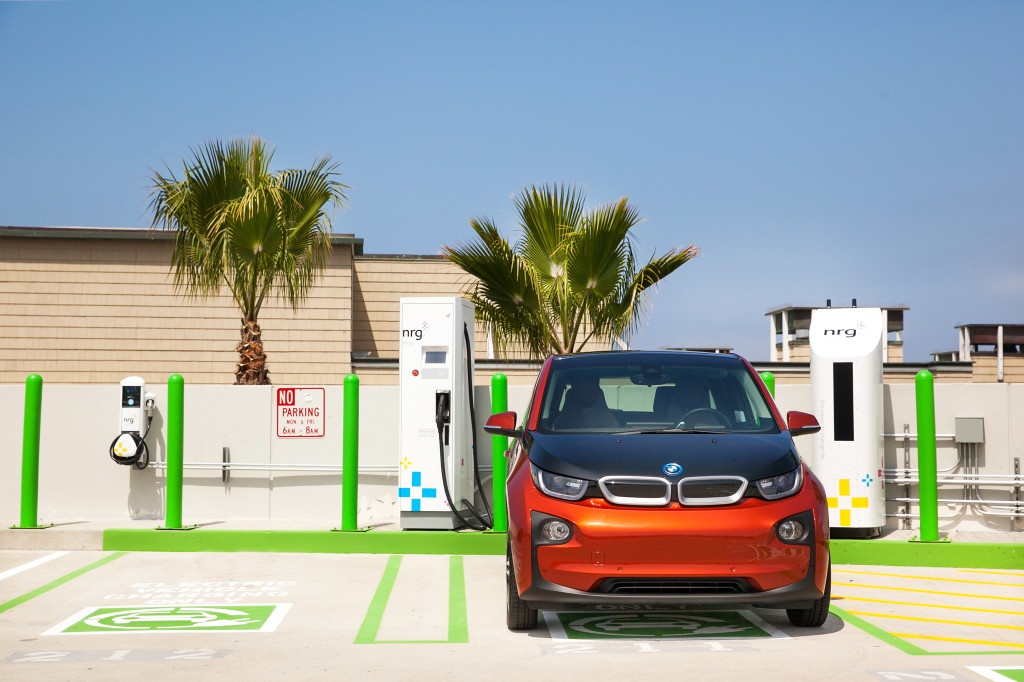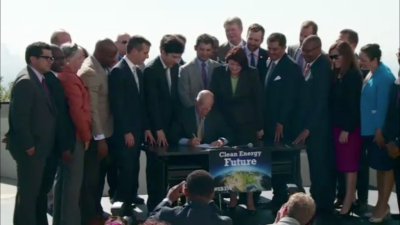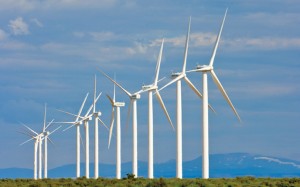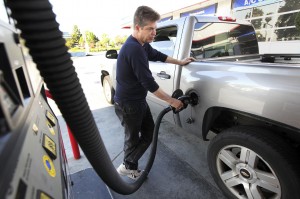Much of our efforts to reduce carbon emissions involves fairly complicated and advanced technologies. Whether it’s solar panels, batteries, flywheels, or fuel cells, these technologies have typically required public support to bring them to scale at a reasonable price, along with significant regulatory or legal reforms to accommodate these new ways of doing old things, from generating power to driving a car.
Yet ironically, here in California we seem to be making the most progress on some of these more technologically advanced areas, and not enough progress in one of the simplest and most cost-effective means of reducing carbon emissions: using less energy in our existing buildings.
Being more energy efficient certainly can involve technological advances, like LED lights instead of incandescent bulbs, lights with sensors that turn off when people leave a room, or more efficient heating or air conditioning units. But it is fundamentally about doing the same with less, and it can often pretty quickly pay off, given the reduction in utility bills that result.
But in California, despite billions spent on energy efficiency efforts, our energy efficiency efforts are barely keeping pace with the increasing demand for electricity. Current utility efficiency programs focus on voluntary, often self-financed measures, with rebates and fixed incentives meant to spur them on. Meanwhile, administrator costs are taking up half of the budgets for many efficiency programs.
Clearly, something needs to change if we are to have any hope of achieving our long-term climate and energy goals in the state. After all, it’s a waste to focus on expensive new renewables and energy storage if we’re not making better progress on the efficient use of the energy we already have.
Given this challenge, the state legislature recently acted to change the nature of our efficiency programs. SB 350 (De Leon, 2015) requires a doubling of efficiency in our buildings by 2030, while AB 802 (Williams, 2015) in part requires utilities to plan for efficiency programs that compensate building owners based on the measured energy saved. These steps will be necessary to change the paradigm and unlock more private investment in energy efficiency retrofits.
To recommend policies to boost this capital market financing for energy retrofits, UC Berkeley and UCLA Law are today releasing a new report “Powering the Savings: How California Can Tap the Energy Efficiency Potential in Existing Commercial Buildings.” The report is the 17th in the two law schools’ Climate Change and Business Research Initiative, generously supported by Bank of America since 2009.
The report describes ways that California could unlock more private investment in energy efficiency retrofits, particularly in commercial buildings. This financing will flow if there’s a predictable, long-term, measured and verified amount of savings that can be directly traced to energy efficiency measures. New software and methodologies can now more accurately perform this task. They establish a building’s energy performance baseline, calibrating for a variety of factors, such as weather, building use, and occupancy changes. That calibrated or “dynamic” baseline can then form the basis for calculating the energy savings that occur due specifically to efficiency improvements.
But the state currently lacks a uniform, state-sanctioned methodology and technology standard, so utilities are reluctant to base efficiency incentives or programs without regulatory approval to use these new methods. The report therefore recommends that energy regulators encourage utilities to develop aggressive projects based on these emerging metering technologies that can ultimately inform a standard measurement process and catalyze “pay-for-performance” energy efficiency financing, with utilities able to procure energy efficiency savings just like they were a traditional generation resource.
To learn more about the report and its recommendations, please join us for a webinar on Monday, April 18th from 10 to 11am. Speakers will include:
- Jeanne Clinton, Special Advisor to Governor Brown for Energy Efficiency, California Public Utilities Commission
- Cynthia Mitchell, energy economist and TURN consultant
- Dennis Quinn, Chief Operating Officer and Co-Founder, Joule Assets. Inc.
You can register via this site.
Hopefully, by tapping into the state’s spirit of innovation, California leaders can show the way to an energy efficiency revolution the way the state helped create a strong market for other clean technologies, like solar panels and energy storage. Because failure on the efficiency front could otherwise nullify so much of our progress in these other areas.
It’s finally started:
Southern California Edison received the green light today from state regulators to begin a pilot project to support installation of as many as 1,500 electric vehicle charging stations within its service territory.
The California Public Utilities Commission’s approval clears the way for SCE to begin implementing its $22 million “Charge Ready” program to get more electric vehicle charging stations installed in locations where people park their cars for extended periods of time. For example, at workplaces, campuses, recreational areas and apartment and condominium complexes.
And it’s just the beginning, as this pilot was in the works before SB 350 passed, which gives utilities an even bigger opportunity to replace Big Oil in California as the transportation fuel provider of choice.
Some ratepayers may complain, but it’s good news for electric vehicle drivers. And over the coming decade, that will include more and more people.
Yesterday I drove my 85-mile range Nissan LEAF about 50 miles to a destination and decided to fast-charge it there for the return trip. I checked Plugshare.com and found an eVgo fast-charge station (their “Freedom Station”), relatively conveniently located at a mall near my destination. Here’s what a typical one looks like:
 You may recall that eVgo (really energy company NRG) got into this charging game as a “punishment” for having defrauded ratepayers with rolling blackouts in the early part of the last decade. The settlement with the state called for the company to spend $100 million in charging infrastructure, but the company has not been able to deliver and is now subject to a California Public Utilities Commission audit to determine what’s going wrong.
You may recall that eVgo (really energy company NRG) got into this charging game as a “punishment” for having defrauded ratepayers with rolling blackouts in the early part of the last decade. The settlement with the state called for the company to spend $100 million in charging infrastructure, but the company has not been able to deliver and is now subject to a California Public Utilities Commission audit to determine what’s going wrong.
Now in my case yesterday I found that there was in fact a station I could access. When I got there, I was pleased with two things: first, the charger was unoccupied, and second, it was actually working.
But here’s where eVgo and its state overlords need improvement. First, there’s no easy way to pay if you’re not part of the eVgo “network” — a monthly subscription service. Otherwise, you have to call a 1-800 number and then work your way to a person to manually take down your credit card number like it’s 1995.
Could you imagine the same setup if you went to a gas station? What if you couldn’t fill up your car at Chevron unless you were a “member”, or else you’d have to jump through hoops? Solution: make it simple. Let drivers simply swipe their credit card and be done with it. Ditch these bogus “network” plan requirements.
Second, the pricing. I was informed by the customer service rep taking my credit card that it would be a flat $10 charge. I only needed an additional 40% charge though to get back home without stress. So why should I pay $10 like I’m getting a full battery charge? Why not pay by the kilowatt hour, like you would at a gas station (paying by gallon)?
California and the charging companies need to do much better than this if they hope to encourage EV adoption and public charging. SB 350 now authorizes utilities to get into this charging game at ratepayer expense. But if the result is simply enabling more of these dysfunctional business models, then it will be money wasted.
For those in the San Francisco Bay Area or with internet radio access, I’ll be on KQED radio this morning at 9am discussing California’s landmark new renewable energy and energy efficiency bill, SB 350. The governor just signed it, as I blogged about this week, and it also contains overlooked but critical provisions on vehicle electrification. Those provisions compensate for the bill language on reducing petroleum fuels by 50% by 2030 that the oil industry worked hard to strip. Tune in if you can here.
Yesterday Governor Jerry Brown signed SB 350 (De Leon), a landmark bill that pledges California to a 50% renewable goal by 2030, as well as a doubling of energy efficiency in existing buildings by that date.
Despite the environmental win, it’s been well-reported by the media and others that California’s environmental leaders got beaten pretty badly this last legislative session by the oil industry. Faced with a provision in SB 350 that would mandate 50% petroleum reduction by 2030 and a bill to codify 2030 and 2050 greenhouse gas reduction goals (SB 32), the industry launched a multi-million dollar campaign, full of false claims of impending gas rationing and price spikes, and targeted it at “moderate” Democrats in the legislature.

Signing ceremony today at Griffith Park in Los Angeles.
The plan worked. These democrats helped lead SB 32 to its demise and stripped SB 350 of the petroleum reduction goal.
But is it possible that the oil industry representatives missed an important provision in SB 350 relating to long-term greenhouse gas reduction goals?
Buried on page 59 in SB 350, the legislature for the first time codified the goal of reducing greenhouse gas emissions to 40 percent below 1990 levels by 2030 and 80 percent below those levels by 2050. The provisions begin in the findings section on the need to electrify transportation, via amendments to the state’s Public Utilities Code:
740.12. (a) (1) The Legislature finds and declares all of the following:
…
740.12. (a) (1) (D) Reducing emissions of greenhouse gases to 40 percent below 1990 levels by 2030 and to 80 percent below 1990 levels by 2050 will require widespread transportation electrification.
The legislation then directs utilities to file applications with the California Public Utilities Commission (CPUC) for programs to electrify transportation in order to meet these climate goals:
740.12. (b) The commission, in consultation with the State Air Resources Board and the Energy Commission, shall direct electrical corporations to file applications for programs and investments to accelerate widespread transportation electrification to reduce dependence on petroleum, meet air quality standards, achieve the goals set forth in the Charge Ahead California Initiative…, and reduce emissions of greenhouse gases to 40 percent below 1990 levels by 2030 and to 80 percent below 1990 levels by 2050 [italics added].
So in the context of electrifying transportation and utilities role in achieving it, the 2030 and 2050 goals are now law, giving the CPUC broad regulatory authority to achieve those goals in this sector.
This is no small potatoes. Electrification of transportation is absolutely essential to meeting long-term climate goals, given that almost 40 percent of emissions come from transportation. In the 50% petroleum reduction debate, it was clear that much of the decrease will be achieved anyway by 2030 given improved federal fuel economy standards and a continued leveling off of vehicles miles traveled per capita in the state – both of which basically would occur without any additional legislative action. But electrification of transportation will still be dependent on state action for the near term, including support for greater deployment of public charging stations and state rebates for electric vehicles purchases and leases, among other policies to boost this nascent industry. The 2030 and 2050 goals for electric vehicles now give the CPUC specific marching orders that would essentially achieve the 2030 petroleum reduction anyway, even without it being specifically called out in SB 350.
To be sure, this codification won’t benefit the full range of climate measures that California is taking for the years beyond 2020, when AB 32 authority plateaus. For example, other alternatives to petroleum, namely biofuels, are not covered by this provision. Currently, the low carbon fuel standard, a regulation under AB 32 authority, is the primary driver of biofuel deployment. Biofuels will be necessary to reduce emissions in the short term for passenger vehicles, at least until battery electrics become cheaper and better, and in the long-term for transportation like aviation and long-haul trucking that isn’t otherwise suitable for battery electrification. Cap-and-trade is also specifically authorized by AB 32 through 2020 and wouldn’t continue based solely on SB 350. In general, regulations from the California Air Resources Board to address climate pollution not tied to renewables, energy efficiency or electrification of transportation couldn’t be extended based solely on these provisions.
But the provisions could have another immediate impact, specifically with litigation over regional and local plans that may fail to take into account long-term climate goals. Most famously, San Diego’s regional transportation plan purports to reduce emissions from driving through 2035 but then backslides out to 2050. The agency argued it didn’t have to study the impacts out to 2050 because the goals are merely based in an executive order. The case is pending before the State Supreme Court on this issue (full disclosure: I co-authored an amicus brief with Legal Planeteer Rick Frank and Jayni Hein supporting the petitioner’s claims about the plan’s failure to study long-term impacts). But now petitioners in litigation like this one have a stronger case that the goals are in fact codified in legislation, and specifically in the transportation context.
And perhaps more importantly, these SB 350 provisions could now create a worthy rival to Big Oil. Big Utilities are itching to get into the electrification game, and they have the resources and power to compete with Big Oil in these legislative showdowns. While California doesn’t want to crowd out the electric vehicle space with utility entrenchment, the state will certainly need utilities to help with charging infrastructure and programs to manage the charging load more effectively. The provisions on Page 59 take the state down that path in a significant way, and the oil industry may soon regret their inclusion.
So while the environmental community has much to cheer about with yesterday’s signing in terms of renewables and energy efficiency, they shouldn’t overlook the important greenhouse gas provisions that may have an even more transformative effect on California’s long-term climate program — and the oil industry’s efforts to limit it.
This legislative season in California will rank as a big disappointment for environmentalists. The last-minute failure to secure a 50% petroleum reduction by 2030 goal, followed by the defeat (actually postponing) of the bill to set 2030 and 2050 greenhouse gas reduction targets, was a major blow for environmentalists used to getting what they want out of Sacramento. Many commentators are starting to blame Governor Jerry “above the fray” Brown for not doing more to secure passage in the Assembly.
 But lost in these setbacks is the major accomplishment of boosting California’s renewable energy standard to 50% by 2030, coupled with a mandate to double energy efficiency in existing buildings by that year. SB 350 (De Leon) may have been stripped of the petroleum goals, but these other targets are significant accomplishments. The energy efficiency piece set forth a process for the California Energy Commission to set long-term targets and evaluate progress on a regular basis, while the renewable energy mandate essentially just adds the 50% goal into the previous legislation requiring 33% by 2020 — in other words, no new process needs to be created for California to continue down this renewable path.
But lost in these setbacks is the major accomplishment of boosting California’s renewable energy standard to 50% by 2030, coupled with a mandate to double energy efficiency in existing buildings by that year. SB 350 (De Leon) may have been stripped of the petroleum goals, but these other targets are significant accomplishments. The energy efficiency piece set forth a process for the California Energy Commission to set long-term targets and evaluate progress on a regular basis, while the renewable energy mandate essentially just adds the 50% goal into the previous legislation requiring 33% by 2020 — in other words, no new process needs to be created for California to continue down this renewable path.
And finally, SB 350 makes it easier for California to develop a western regional market for renewables that will cover neighboring states and allow California both to import renewables from out-of-state when we need them and export our surplus renewables to other states. The legislation allows the California Independent System Operator, which essentially manages California’s grid, to change its governing rules to allow regional transmission operators to become part of the system. That will facilitate the import and export of renewables, helping California to better balance our in-state supply and ensure that dips in production don’t result in more natural gas-fired power.
So while the legislative season may have largely ended in disappointment, the accomplishments that did occur are worth celebrating for environmentalists.
It was a rare defeat yesterday for California’s environmental community. After major victories in 2006 with AB 32 (to reduce greenhouse gases to 1990 levels by 2020), 2008 with SB 375 (to reform transportation and land use planning), and in 2010 with a voter rejection of the oil industry’s attempt to roll back AB 32 (Prop 23), climate advocates were getting comfortable in the Golden State.
But the Western States Petroleum Association (aka “Big Oil”) trotted out a well-funded and dishonest ad campaign targeted at “moderate” Assembly Democrats, who gutted a provision of SB 350 that would have legislated a goal to reduce petroleum use in California by half by 2030.
 So is this a major setback for the environment and public health in California? Well, maybe not. If the Assembly passes and the governor signs SB 32, the state’s effort to continue the progress on AB 32 out to 2030 and 2050, the California Air Resources Board could essentially require the same petroleum reduction goals through regulation. That agency would have broad authority to do so under SB 32, as it currently has under AB 32. Because transportation emissions are the largest wedge in the greenhouse gas emissions pie, the agency has to tackle petroleum fuels at some level to achieve the broader legislated goals.
So is this a major setback for the environment and public health in California? Well, maybe not. If the Assembly passes and the governor signs SB 32, the state’s effort to continue the progress on AB 32 out to 2030 and 2050, the California Air Resources Board could essentially require the same petroleum reduction goals through regulation. That agency would have broad authority to do so under SB 32, as it currently has under AB 32. Because transportation emissions are the largest wedge in the greenhouse gas emissions pie, the agency has to tackle petroleum fuels at some level to achieve the broader legislated goals.
And the state is already well on its way to achieving those goals anyway, thanks to federal fuel economy standards, improving electric vehicle technologies, and greater renewable biofuels deployment, as NRDC points out.
But the downside is real: having these goals legislated, as opposed to being in a regulatory form pursuant to a governor’s executive order, means they would have been more certain and fixed. Now a new administration could force changes to how the Air Resources Board regulates fuels, and Big Oil could use their influence during the regulatory process to water down or gut new rules. Plus, they can more easily turn to the courts to challenge regulations, resulting in delays and extra costs for the agency.
So it’s definitely a loss for the environmental community, but in the long run the path that California has to take is clear. Big Oil will see declining market share as vehicles become more efficient, people drive less, and as electric vehicles take hold. Their victory yesterday will probably be a temporary one.
Well, it doesn’t take a brain surgeon to figure out which industries stand to lose if California transitions to a low-carbon economy. Judging by the latest attacks on SB 350 and SB 32, sprawl developers and the oil industry are feeling a little panicked.
First oil. They sent out a deliberately misleading mailer claiming that SB 350, which seeks to reduce California’s oil consumption in half by 2030, will lead to gas shortages and higher prices. Under the fake pro-consumer-sounding group the California Drivers Alliance, they claim the following:
The Gas Restriction Act of 2015 (SB350) will restrict the use of gas and diesel by 50 percent. This law will limit how often we can drive our own cars. The state will also be collecting and monitoring our personal driving habits and tracking how much gas we use. They’re now reviewing regulations to force automakers to include data monitoring systems in all cars so that regulators will be able to penalize and fine us if we drive too much or use too much gas.
The Sacramento Bee then shot this lying fish in its barrel with a fact check:
The ad exploits a lack of specificity in Senate Bill 350 about what measures the California Air Resources Board could take to reduce petroleum use. But it misleads by suggesting gas rationing, surcharges and citations based on driving habits are in store.
Bottom line: California will be pursuing fuel economy measures, electric vehicles, hydrogen fuel cells and biofuels to meet these objectives — not gas rationing. With battery costs declining, battery electrics should be the dominant vehicles in production by then anyway.
Next comes big sprawl in the guise of the Building Industry Association. The BIA claims SB 32, to extend our greenhouse gas reduction goals to 2030 and 2050, will be an automatic “zero net energy” mandate, leading to an additional $58,000 in costs for each new housing unit, or a price increase of over 12 percent.
However, these numbers once again mislead. First off, the bill is no such mandate for new construction. The California Energy Commission will continue to develop new ways to reduce pollution from new buildings, but it will be on the same trajectory it’s been on for decades, which has saved Californians billions since the 1970s.
Second, most of the costs the BIA tallies are attributed to oversized, expensive solar PV arrays for each new home. Even if all new buildings had to have those arrays (which they don’t), prices will come down by 2030 significantly (80% in the last five years or so), while most neighborhoods would likely pool together on community solar rather than purchasing it individually. Finally, any increase in efficiency measures and solar will only save California residents in reduced energy bills.
For more on the BIA arguments, NRDC has a nice take-down here.
I guess it’s good news these industries are fighting back. If we have any hope of a cleaner, more prosperous and sustainable economy, it will only happen if these industries go the way of the fossils they help burn.


